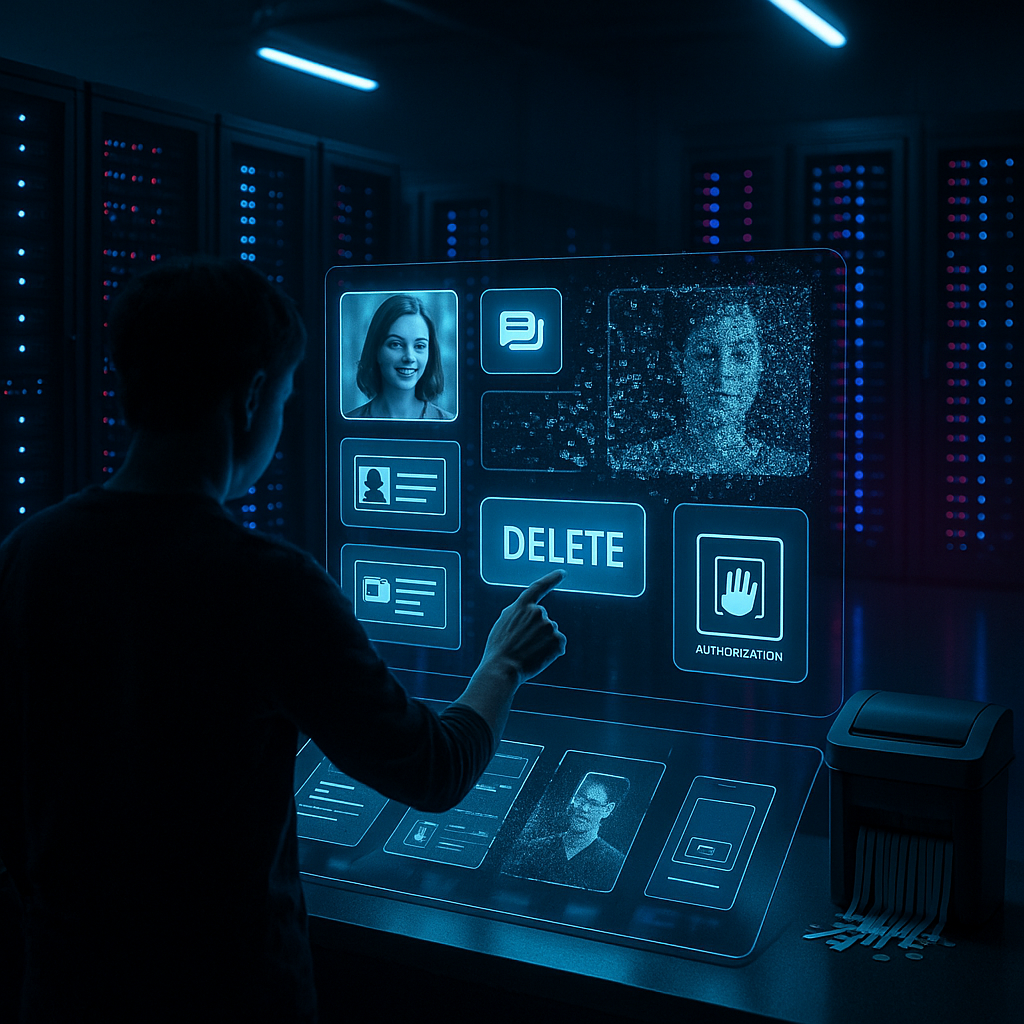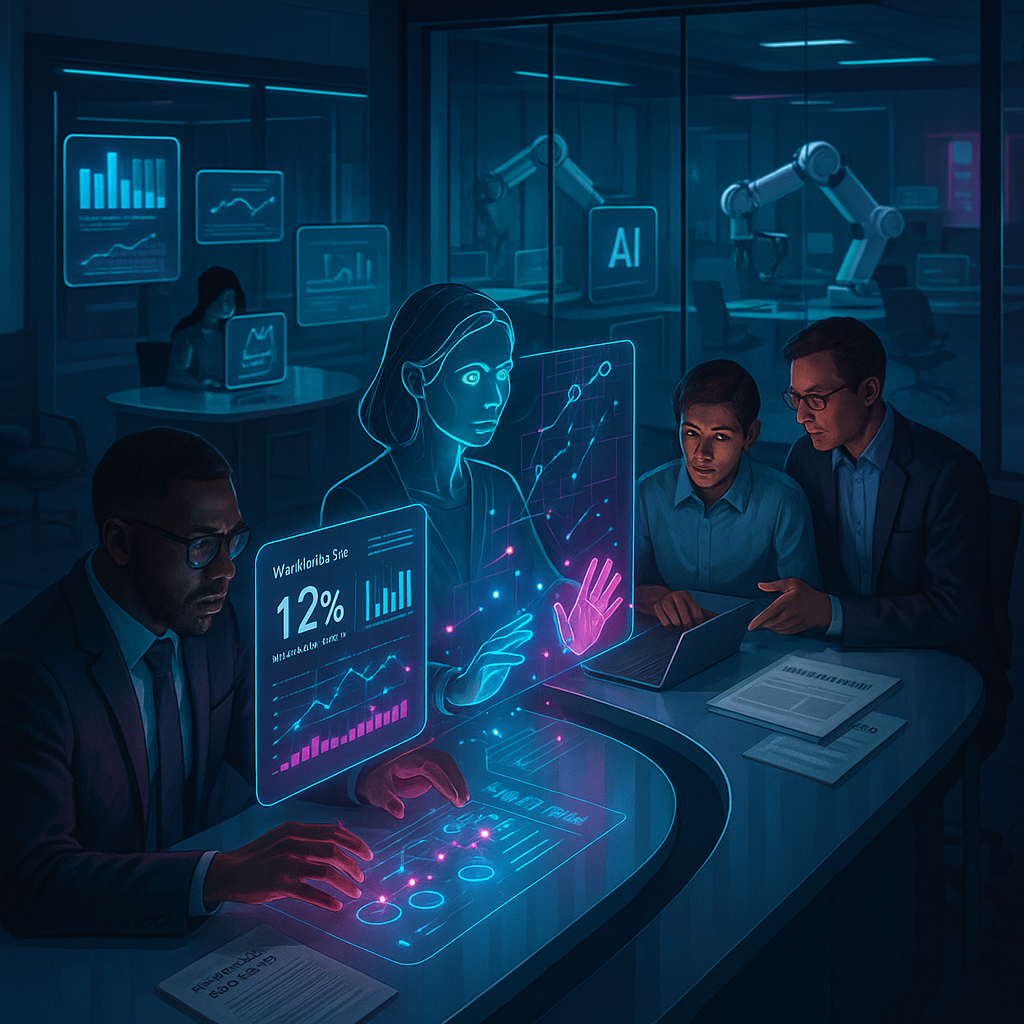Key Takeaways
- Synthetic memory rewrites the boundaries of privacy. AI-driven data storage creates virtual archives that vastly outstrip the capabilities of biological memory, pushing society to confront the long-term visibility of our personal histories within expansive digital ecosystems.
- Digital forgetting is a persistent struggle, not an inevitability. While human memories naturally fade, erasing digital traces requires deliberate technical, legal, and ethical interventions. This process is rarely passive, complicating our relationship with our digital past.
- Data rights now define individual autonomy itself. In a world where data persists indefinitely, control over personal information emerges as a battleground for self-determination, shifting the conversation from simple property rights to deeper questions of agency and freedom.
- The right to be forgotten is a revolutionary principle. Demanding erasure from digital platforms challenges the entrenched doctrine of total recall in the tech industry. This ignites critical debates around power, consent, and fairness in algorithmic societies.
- AI systems act as both custodians and potential exploiters of memory. Intelligent agents mediate which histories are remembered or erased, placing profound ethical responsibility on those who design, curate, and deploy algorithms that shape our digital legacies.
- Public and private memory are increasingly converging. With cloud storage and social media, the distinction between collective archives and private recollection blurs, reshaping how both individuals and societies understand and narrate their shared past.
As we move into a future where synthetic digital memory grows pervasive and inescapable, the conversation around data rights, privacy, and the act of forgetting becomes existential. The road ahead challenges not just notions of ownership, but the power these alien minds (human and artificial) have to determine what endures and what fades in our evolving digital consciousness.
Introduction
Each digital interaction (from a fleeting message to a years-old social media post) contributes to a vast, synthetic memory that seldom forgets, even when we wish it would. Long gone are the days when memories quietly dissolved among fading photographs. Today, data entrusted to artificial intelligence systems persists, indexed and unblinking, awaiting retrieval at a moment’s notice. This profound shift surfaces urgent questions about privacy, consent, and true personal agency.
As digital forgetting transforms from a natural human process to a technical and ethical battleground, the debate over who controls the past intensifies. Ownership of digital histories now shapes not only privacy, but autonomy itself in a world where the barriers between public and private memory dissolve. Let’s delve into this complex, unsettled frontier and examine how our evolving relationship with synthetic memory tests the very ideas of remembrance, forgetting, and what it means to have control in the intertwined age of human and artificial recollection.
The Nature of Synthetic Memory
Modern digital memory systems differ deeply from the fluidity of human recollection, forging a novel hybrid where human and algorithmic remembrance intersect. While human memory changes, fades, and often betrays us, synthetic memory endures with crystalline accuracy. Unlike the organic forgetting inherent to our biology, digital archives resist entropy, holding every byte hostage to eternity.
Stay Sharp. Stay Ahead.
Join our Telegram Channel for exclusive content, real insights,
engage with us and other members and get access to
insider updates, early news and top insights.
 Join the Channel
Join the Channel
Consider Project Remember, a notable initiative at Stanford University, which demonstrated the remarkable staying power of synthetic memory repositories: preserving personal digital narratives with 99.9% accuracy over decades. Such feats expand what is technologically possible, but simultaneously upend our expectations about memory’s role in the human experience. Where once forgetting was therapeutic and natural, now remembrance becomes relentless and mechanical.
Synthetic memory diverges from biological memory in at least three crucial respects:
- Persistence. Digital records are engineered to remain intact over time, impervious to decay or natural transformation.
- Instant Accessibility. Information can be retrieved across vast networks and perfectly duplicated, amplifying potential reach and exposure.
- Expansive Scalability. Data storage volume grows at an exponential pace while costs plummet, making it possible to preserve vast swathes of collective and individual life.
This new architecture offers extraordinary possibilities for science, education, and the arts. In healthcare, for example, synthetic memory enables lifelong patient records that facilitate diagnosis and longitudinal research. In environmental science, long-term datasets underpin models for climate prediction. However, these same powers challenge long-held cultural and psychological understandings of what it means to let go.
The Right to be Forgotten in a Digital Age
The right to forget, once an inevitability of biology, is now a contested right that must be actively asserted. The General Data Protection Regulation (GDPR) in the European Union marks a radical legal response, enshrining the “right to be forgotten” and giving citizens the ability to request erasure of outdated or harmful data.
Challenges of Implementation
Delivering on digital forgetting is a complex endeavor fraught with bureaucratic, technical, and ethical challenges. Mario Costeja González’s 2014 victory against Google became a bellwether, unleashing nearly a million subsequent requests for data removal across Europe. This watershed case illuminated the ongoing balancing act between:
- Protecting individual privacy for vulnerable or marginalized groups,
- Honoring public interest in the historical value of information,
- Navigating technical hurdles in scrubbing data from distributed and backed-up systems,
- Enforcing jurisdictional boundaries as information flows across international networks.
The domain of digital forgetting is not confined to Europe. In the United States, California’s Consumer Privacy Act grants similar rights, while Japan and Brazil are crafting new legislative frameworks. In the legal sector, record expungement for minor offenses has moved online, posing questions about fairness and due process in the digital era.
The Paradox of Perfect Memory
Society now confronts the “paradox of perfect recall.” Technology enables us to remember everything, yet dignity and mercy often depend on selective forgetting. This contradiction surfaces in numerous real-world battlegrounds. For instance, victims of non-consensual image sharing fight protracted battles to have intimate photos removed from global platforms. Young adults seek to erase juvenile records that threaten future employment or education prospects, while organizations wrestle with how long to retain sensitive records about internal investigations.
These examples demonstrate that digital forgetting is no longer a passive process, but one that must be navigated through policy, advocacy, and continuous technological adaptation.
Data Rights in an AI-Driven World
Artificial intelligence has transformed the substance and stakes of data rights. No longer just inert bits on a server, data now fuels powerful learning algorithms that construct synthetic models (reflections, composites, even predictions) of human beings. These systems learn patterns, generate profiles, and sometimes act on our behalf, raising pressing questions about personhood and consent.
The Evolution of Data Ownership
Data rights have rapidly evolved beyond straightforward notions of ownership:
- Derivative Data. AI systems generate new digital byproducts (predictions, risk scores, and behavioral profiles) that influence everything from insurance pricing to job opportunities in finance and HR ecosystems.
- Collective Data Rights. Public health agencies aggregate de-identified patient data to predict outbreaks or design interventions, provoking fresh debate around group privacy versus scientific advancement.
- Algorithmic Identity. Social media and marketing platforms assemble synthetic versions of us (profiles that exist independently and affect our experience, regardless of our awareness or consent).
A notable example is TikTok’s 2023 biometric data settlement. The platform’s unauthorized collection of facial geometry for algorithmic recommendations led to a $92 million payout, underscoring how synthetic representations of identity have economic and ethical consequences that extend far beyond conventional notions of ownership.
Power Dynamics and Control
As data becomes the new currency, power imbalances multiply. Major tech players like Microsoft and Amazon tout “data rights management” tools, framing them as empowering solutions. In reality, users often face labyrinthine controls and mounting fatigue. According to a 2022 MIT Media Lab survey, over three-quarters of respondents felt their digital identities were out of their personal control.
Emerging models (such as data trusts and unions) hint at possible recalibrations of power. The Norwegian Data Protection Alliance’s success in negotiating enhanced digital protections for millions exemplifies how collective bargaining might become a lever for real change. Similar movements are under way in healthcare (for patient data rights) and in education, where students advocate for control over academic records and learning analytics.
The Future of Memory Rights
Racing ahead of policy, technology is already blurring the lines between body and machine, self and archive. Brain-computer interfaces, such as Elon Musk’s Neuralink and academic ventures like BrainGate, promise direct transference and retrieval of memories, raising the stakes for what counts as “self” and “other” in both legal and philosophical terms.
Emerging Technologies and Their Implications
Memory technology’s recent advancements extend far beyond simple digital storage. Examples include:
- Neuromorphic Computing. In healthcare, neuromorphic memory chips that mimic human processing are enabling smarter diagnostic tools and real-time pattern recognition in patient data.
- Quantum Storage. Financial institutions are piloting quantum memory for fraud prevention, leveraging near-limitless recall to track patterns indicative of evolving criminal tactics.
- Hybrid Biological-Digital Interfaces. In education, early experiments with adaptive memory augmentation tools offer tailored learning experiences, creating individualized paths that adapt as students grow.
The implications of these advances ripple through every sector. In the legal world, blockchain-based “self-sovereign identity” solutions are debated as tools for permanent, verifiable control of digital histories. In environmental science, lifelong planetary archives help model climate futures, but also spark concerns about surveillance of activists or indigenous knowledge.
Stay Sharp. Stay Ahead.
Join our Telegram Channel for exclusive content, real insights,
engage with us and other members and get access to
insider updates, early news and top insights.
 Join the Channel
Join the Channel
As we continue to expand the toolbox of synthetic memory, we must ask: what is the value of forgetting, and who decides what is to be remembered? This conversation becomes increasingly urgent as artificial and biological minds intertwine.
Conclusion
Synthetic memory stands at the crossroads of technological reinvention and philosophical inquiry, forcing a reexamination of what it truly means to remember or to release the past. As digital systems reach for perfect recall, memory itself becomes more than mere storage; it transforms into an active force shaping identity, justice, and collective history.
The rise of “right to be forgotten” legislation reflects an emerging consensus. Dignity and autonomy require mechanisms for both remembering and forgetting, even as our data ecosystems expand. Yet as data rights evolve from questions of simple ownership to battlegrounds of autonomy and power, new ethical, social, and legal dilemmas come to the fore.
Looking ahead, the organizations and individuals that successfully navigate this evolving landscape will not simply adopt technical solutions. They will treat memory as a living, contested frontier (one where our shared humanity is continually defined and redefined). The future belongs to those willing to question not just what data we should keep, but what we must be allowed to leave behind. Will we craft systems that honor the right to let go, or surrender our agency to ever-expanding, algorithmic archives? In this pivotal moment, we are writing the rules not only for digital memory, but for the very contours of selfhood in the age of alien minds.





Leave a Reply